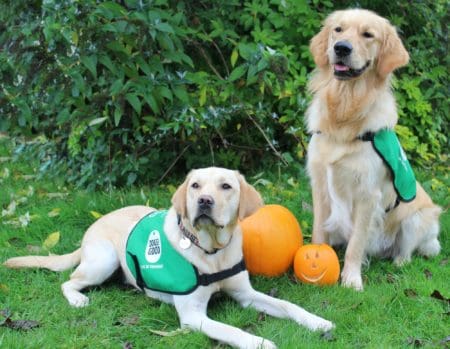Dogs at Halloween: keeping your dog calm
Does your dog feels anxious with the loud noises and costumes? We have some expert advice to reduce stress for dogs at Halloween.

Why does my dog get stressed at Halloween?
Halloween can mean a steady stream of doorbell rings and knocks which can make your dog feel anxious. Add in painted faces and masks which makes people look strange and also means dogs can’t read human facial expressions. Finally, in some cases, dogs are dressed up in uncomfortable costumes which they may really struggle to cope with.
Is my dog stressed?
Stress can be a response to a stimulus from the surrounding environment. It is a natural response that prepares body and mind for a reaction or as an instinctive alert to something threatening.
External things which your dog could encounter at Halloween can include (but are not limited to):
- the presence of new unfamiliar people
- unknown objects
- loud noises
- any of the above that have caused bad experiences in the past (e.g. manhandling from a person, fireworks etc.)
Some signs of stress in dogs include:
- Fiddle – scratching, sneezing, slow wagging tail, frantic spinning
- Displacement behaviours – slow circling, ‘grinning’, cowering, showing whites on eyes
- Flight – withdrawing, trying to escape
- Freeze – stiff body posture, reduced breathing rate, straight and rigid tail
- Fight – air snapping, baring teeth, biting, crouching, barking
Read about how to recognise the many signs of stress in dogs here.
Stress-busting advice for dogs at Halloween

- Take them for a walk early. Aim to get out before dark to avoid bumping into too many costumes which may confuse or upset them. Having plenty of exercise during the day will also increase the likelihood of them remaining calm throughout the evening.
- Distract them from loud noises. Put on the radio or TV to mask some of the noise from outside. You could do a few ‘trial runs’ where you ring your doorbell and if/when your dog remains calm, you can reward them with a tasty treat. If they remain stressed with the doorbell ringing frequently, you could consider removing it or switching it off for Halloween. Prepare a Kong with some of their dinner which you can give them at key ‘trick or treat’ time or giving your dog a chew can also help. Read more on how to prepare your dog for fireworks here.
- Get familiar with your costume. If people in your household are dressing up for Halloween, encourage your dog or puppy to smell and investigate the costumes. Put any masks on in front of them and turn the fact that you look strange into a nice experience by giving them a few treats. Ask children or adults that are visiting not to stand over your dog or suddenly approach them as this can be intimidating and potentially stressful.
- Keep some treats handy. Consider having a pot of dog treats by the door and if your dog does say hello to visitors nicely and happily, you could ask your Halloween visitors to give them a dog treat, if they’re comfortable doing that.
- Only dress them in their collar. Most dogs don’t enjoy wearing costumes and some can even be dangerous around candles and can make them feel anxious. So, rather than a costume, you could consider getting a Halloween-style collar and lead if you want to involve your dog in some fancy dress fun. Make sure that you transfer your dogs’ ID tag to any new collar because if they suddenly escape, it’s vitally important that they can be safely returned to you.
Safety tips for dogs at Halloween
It’s hugely important to keep chocolate, sweets and their wrappers well away from your dog. Many sweets, especially those containing chocolate or xylitol (an artificial sweetener), are toxic to dogs. Find out that other food items are poisonous to dogs.
Candles in pumpkins and around the home can be dangerous around wagging tails, so swap them for battery powered ones to reduce any risk.
Help support our life-changing work...
Imagine if everyday tasks were so challenging or physically demanding they affected your quality of life. For many people living with a disability of families with a child with autism, that is their reality. Now imagine if a specially trained four-legged friend could restore your, or your family’s, independence.
The demand for our services is high and we can’t help as many people as we would like to without more funding. Please help us continue to bring people and dogs together to help make everyday life possible in so many extraordinary ways.
Every contribution, whatever size, is important and helps us make a difference.

